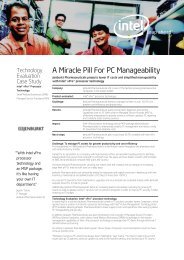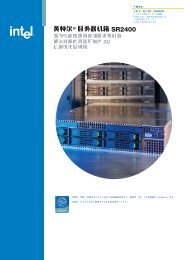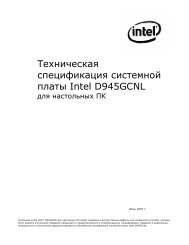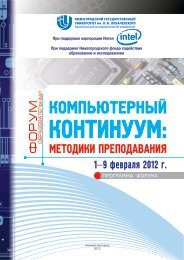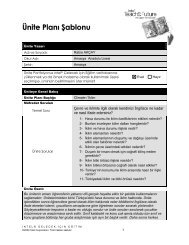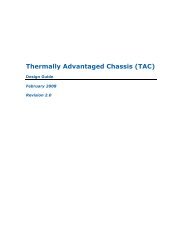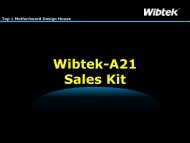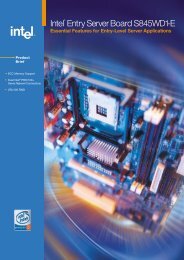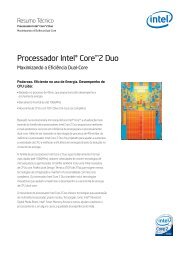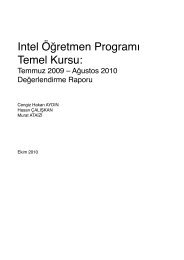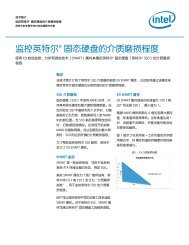Technical Product Specification for Canoe Pass - Preminary - Intel
Technical Product Specification for Canoe Pass - Preminary - Intel
Technical Product Specification for Canoe Pass - Preminary - Intel
You also want an ePaper? Increase the reach of your titles
YUMPU automatically turns print PDFs into web optimized ePapers that Google loves.
<strong>Intel</strong> ® Server System P4000CP Power System Options <strong>Intel</strong> ® Server Board S2600CP and Server System P4000CP TPS<br />
120<br />
Table 81. AC Input Voltage Range<br />
PARAMETER MIN RATED VMAX<br />
Start up VAC Power Off<br />
VAC<br />
Voltage (110) 90 Vrms 100-127 Vrms 140 Vrms 85VAC +/- 70VAC +/-<br />
4VAC 5VAC<br />
Voltage (220) 180 Vrms 200-240 Vrms 264 Vrms<br />
Frequency 47 Hz 50/60 63 Hz<br />
Notes:<br />
1. Maximum input current at low input voltage range shall be measured at 90VAC, at max load.<br />
2. Maximum input current at high input voltage range shall be measured at 180VAC, at max load.<br />
3. This requirement is not to be used <strong>for</strong> determining agency input current markings.<br />
13.3.2.4 AC Line Dropout/Holdup<br />
An AC line dropout is defined to be when the AC input drops to 0VAC at any phase of the AC<br />
line <strong>for</strong> any length of time. During an AC dropout the power supply meets dynamic voltage<br />
regulation requirements. An AC line dropout of any duration does not cause tripping of control<br />
signals or protection circuits. If the AC dropout lasts longer than the hold up time the power<br />
supply recovers and meets all turn on requirements. The power supply meets the AC dropout<br />
requirement over rated AC voltages and frequencies. A dropout of the AC line <strong>for</strong> any duration<br />
does not cause damage to the power supply.<br />
Table 82. AC Line Holdup Time<br />
Loading Holdup time<br />
70% 12msec<br />
13.3.2.4.1 AC Line 12VSBHoldup<br />
The 12VSB output voltage stays in regulation under its full load (static or dynamic) during an AC<br />
dropout of 70ms min (=12VSB holdup time) whether the power supply is in ON or OFF state<br />
(PSON asserted or de-asserted).<br />
13.3.2.5 AC Line Fuse<br />
The power supply has one line fused in the single line fuse on the line (Hot) wire of the AC<br />
input. The line fusing is acceptable <strong>for</strong> all safety agency requirements. The input is a slow blow<br />
type. AC inrush current does not cause the AC line fuse to blow under any conditions. All<br />
protection circuits in the power supply does not cause the AC fuse to blow unless a component<br />
in the power supply has failed. This includes DC output load short conditions.<br />
13.3.2.6 AC Line Transient <strong>Specification</strong><br />
AC line transient conditions are defined as “sag” and “surge” conditions. “Sag” conditions are<br />
also commonly referred to as “brownout”, these conditions is defined as the AC line voltage<br />
dropping below nominal voltage conditions. “Surge” is defined to refer to conditions when the<br />
AC line voltage rises above nominal voltage.<br />
The power supply meets the requirements under the following AC line sag and surge conditions.<br />
Table 83. AC Line Sag Transient Per<strong>for</strong>mance<br />
<strong>Intel</strong> Confidential Revision 0.8<br />
<strong>Intel</strong> order number G26942-003



